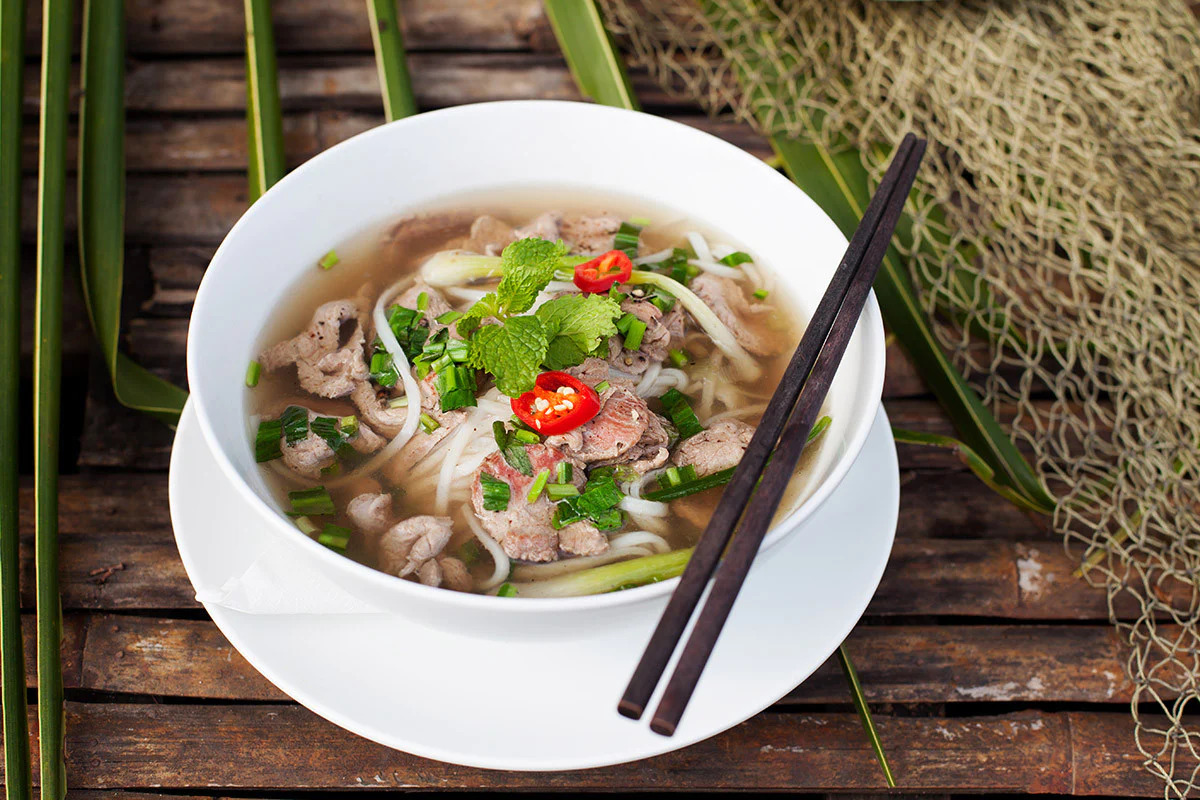How Is Pho Made: A Step-by-Step Guide to Creating this Vietnamese Dish
Pho, a Vietnamese culinary delight, has gained international recognition as a beloved dish that tantalizes taste buds with its aromatic flavors and hearty components. This traditional Vietnamese soup is a harmonious blend of savory broth, tender rice noodles, and an assortment of fresh herbs and toppings. Let's delve into the fascinating process of how pho is made, unraveling the secrets behind this delectable masterpiece.

(Traditional Vietnamese Pho)
How is pho made
At the heart of every bowl of pho lies the broth, the essential foundation that provides the dish its distinct taste and character. The broth begins its journey by simmering a combination of high-quality beef bones, such as oxtail and knuckle bones, along with aromatic ingredients like charred onions, ginger, and spices. The bones are carefully selected to ensure a rich and flavorful broth that develops over hours of slow cooking. The process of making the broth is an art, requiring skillful adjustments of heat and constant monitoring to achieve the desired balance of flavors.
As the broth simmers, the flavors from the bones and aromatic ingredients meld together, creating a fragrant elixir that serves as the base of the pho. The skilled pho chefs carefully skim off any impurities that rise to the surface, ensuring a clear and pristine broth. This meticulous attention to detail ensures that the broth retains its clarity and enhances the overall taste.
Once the broth has reached its peak flavor, it is time to assemble the pho bowl. Thin rice noodles, known as "banh pho," are cooked separately and added to the bowl. These silky noodles absorb the flavors of the broth, creating a satisfying and comforting texture. The next step is to add the protein component, which is typically thinly sliced beef or chicken. The thinly sliced raw meat is added directly to the bowl, and the hot broth is poured over it, gently cooking the meat to perfection.
To complete the pho experience, an assortment of garnishes and condiments are served alongside the bowl. Fresh herbs like Thai basil, cilantro, and bean sprouts add a vibrant freshness, while thinly sliced jalapenos and lime wedges provide a zesty kick. Additionally, condiments such as hoisin sauce and Sriracha are available for diners to customize the flavors according to their preferences.
Pho is not just a dish; it is a cultural phenomenon that has become a beloved symbol of Vietnamese cuisine. It has evolved and adapted over time, with regional variations that reflect the diversity of Vietnamese culinary traditions. Whether it's the classic beef pho from Hanoi or the chicken-based pho ga from the south, each variation carries its own unique nuances and flavors.
The art of making pho requires patience, precision, and a deep understanding of flavors. It is a labor of love that encompasses the essence of Vietnamese culinary heritage. The process of crafting a perfect bowl of pho is a testament to the dedication and expertise of the chefs who strive to create a symphony of flavors in every spoonful.
Step by Step
Broth Preparation: The foundation of pho is its flavorful broth. Beef bones, such as oxtail or marrow bones, are typically used to create a rich and aromatic base. The bones are first blanched to remove impurities, then simmered for several hours along with charred onion, ginger, and spices like star anise, cloves, cinnamon, and coriander. This slow cooking process extracts the essence and depth of flavors from the ingredients.
Seasoning the Broth: The broth is carefully seasoned with fish sauce, sugar, and salt to achieve the desired balance of savory, sweet, and salty flavors. Adjustments can be made according to personal preference.
Noodle Preparation: Pho is typically served with flat rice noodles. These noodles are soaked in water to soften them before briefly blanching them in boiling water. This ensures they are cooked just enough to retain their chewy texture.
Meat Selection: Pho commonly features thinly sliced beef, such as raw beef eye round, which is added directly to the bowl and cooks in the hot broth. Sometimes, beef flank, tendon, or meatballs are also included. The thinly sliced meat cooks quickly in the hot broth, remaining tender and flavorful.
Assembly: To serve, the softened rice noodles are placed in individual bowls. The desired meat toppings, such as the raw beef slices or cooked beef, are added on top. Hot broth is then ladled over the noodles and meat, partially cooking the raw beef and warming up the other ingredients.
Garnishes and Condiments: Pho is traditionally accompanied by a plate of fresh herbs and bean sprouts. Common garnishes include Thai basil, cilantro, lime wedges, and sliced chili peppers. These elements add freshness and brightness to the dish. Additionally, condiments like hoisin sauce and Sriracha are often provided to enhance the flavors according to personal taste.
Enjoying Pho: Once the bowl of pho is assembled with all the desired ingredients, it is ready to be enjoyed. Diners can mix the components, including the herbs and condiments, to personalize the flavors. Pho is often eaten with chopsticks to pick up the noodles and meat, while a spoon is used to sip the flavorful broth.
Watch the video How is Pho Made
(How to Make Quick Beef Pho)
In conclusion, pho is a culinary masterpiece that showcases the artistry and craftsmanship of Vietnamese cuisine. From the meticulously simmered broth to the tender noodles and fresh garnishes, every element is thoughtfully prepared to create a harmonious and flavorful experience. Whether enjoyed on the bustling streets of Vietnam or in a cozy restaurant abroad, a bowl of pho is a culinary journey that captures the heart and soul of Vietnamese culture.